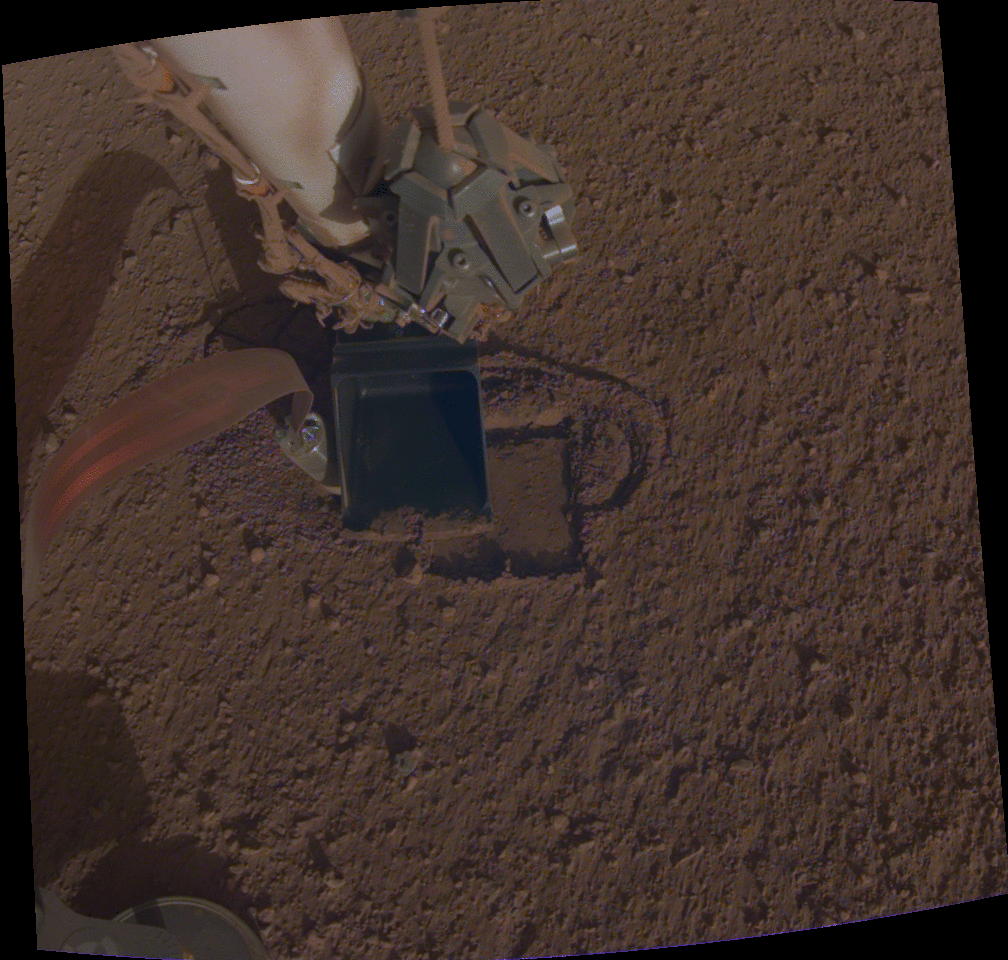Mars InSight's 'mole' is moving again

NASA's InSight spacecraft has used its robotic arm to help its heat probe, known as "the mole," dig nearly 2 centimeters (3/4 of an inch) over the past week. While modest, the movement is significant: Designed to dig as much as 16 feet (5 meters) underground to gauge the heat escaping from the planet's interior, the mole has only managed to partially bury itself since it started hammering in February 2018.
The recent movement is the result of a new strategy, arrived at after extensive testing on Earth, which found that unexpectedly strong soil is holding up the mole's progress. The mole needs friction from surrounding soil in order to move: Without it, recoil from its self-hammering action will cause it to simply bounce in place. Pressing the scoop on InSight's robotic arm against the mole, a new technique called "pinning," appears to provide the probe with the friction it needs to continue digging.
Since Oct. 8, 2019, the mole has hammered 220 times over three separate occasions. Images sent down from the spacecraft's cameras have shown the mole gradually progressing into the ground. It will take more time—and hammering—for the team to see how far the mole can go.
The mole is part of an instrument called the Heat Flow and Physical Properties Package, or HP3, which was provided by the German Aerospace Center (DLR).
"Seeing the mole's progress seems to indicate that there's no rock blocking our path," said HP3 Principal Investigator Tilman Spohn of DLR. "That's great news! We're rooting for our mole to keep going."
NASA's Jet Propulsion Laboratory in Pasadena, California, leads the InSight mission. JPL has tested the robotic arm's movement using full-scale replicas of InSight and the mole. Engineers continue to test what would happen if the mole were to sink beneath the reach of the robotic arm. If it stops making progress, they might scrape soil on top of the mole, adding mass to resist the mole's recoil.
If no other options exist, they would consider pressing the scoop down directly on the top of the mole while trying to avoid the sensitive tether there; the tether provides power to and relays data from the instrument.
"The mole still has a way to go, but we're all thrilled to see it digging again," said Troy Hudson of JPL, an engineer and scientist who has led the mole recovery effort. "When we first encountered this problem, it was crushing. But I thought, 'Maybe there's a chance; let's keep pressing on.' And right now, I'm feeling giddy."
Provided by Jet Propulsion Laboratory





















